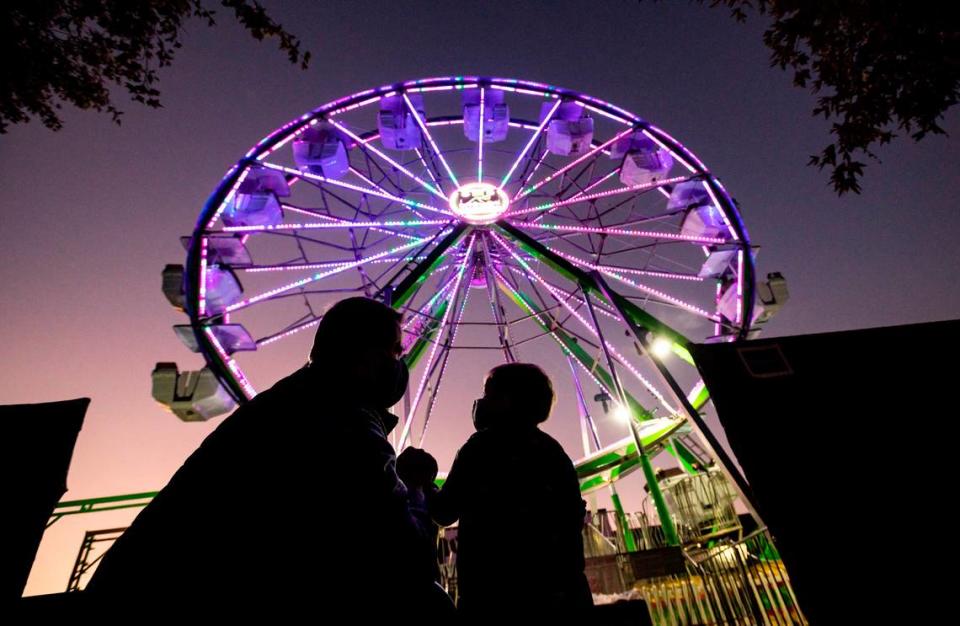Old Sacramento has been consumed by COVID misery. Now it’s a symbol for the city’s recovery
Much is made in Sacramento about the economic engines in the downtown core and midtown area, and how crucial their revitalization is to the city’s post-pandemic recovery. But somewhat unexpectedly it’s been Old Sacramento, the city’s historic waterfront homage to our Gold Rush roots, that’s become a living laboratory of COVID hardship and our ability to recover.
The misery of this pandemic has consumed its cobblestone streets. Prolonged stay-at-home orders shuttered storefronts and added new vacancies. Members of the unhoused population found respite in the absence of the hum and hustle, sheltering in alcoves and sleeping on terminus benches.
When visitors returned in force earlier this year, the same uptick in violence we’ve seen across Sacramento and nationwide played out near the promenade with multiple shootings over the summer. In a July mass shooting near Joe’s Crab Shack, two people were killed and four were wounded.
Opinion
Amid all this, small business owners are trying to reclaim some of the revenue they’ve lost over the course of the pandemic and hire enough employees to stay in operation.
Taken all together, Old Sacramento has become a nexus for the humanitarian and economic devastation COVID has wrought in our community. It’s also become a symbol for our recovery, a barometer for whether Sacramento can effectively clean up the streets, revive business and tourism and put the city back on its pre-pandemic trajectory as a destination city.
“What will take to actually realize the Sacramento comeback?” Sacramento Mayor Darrell Steinberg asked at a press conference Tuesday.
Apparently, a huge amount of federal relief dollars.
Elected officials, city business leaders and local entrepreneurs stood shoulder to shoulder at City Hall to spotlight a $61.7 million allocation of American Rescue Plan funds to address homelessness, restore businesses, prevent gang violence and provide job training that links to the Aggie Square development. Old Sacramento and the central city corridor were the focal point of the economic chunk.
The details of the funding package for Old Sac are worth noting. Of the $20.7 million not being used for implementing the city’s comprehensive homeless plan, $5 million will be used to fund security cameras and lighting improvements in Old Sacramento.
“As the small business community begins to come up from the fog of COVID and enter the holiday season, these improvements can’t come fast enough,” said Steamers Bakery owner Janie Desmond-Ison.
But more important than the funding itself was what this press conference represented: the complicated reality that jump starting our small businesses is the only viable path for Sacramento’s recovery.
During the pandemic, we’ve become incredibly comfortable in our enclaves. We strengthened our relationships with our neighborhood shops and restaurants, and found that intimate settings were much more agreeable. In my corner of midtown, that’s the Ice Blocks, Broadway and Oak Park.
COVID habits like that don’t do much for a city like Sacramento, which was pouring a massive amount of money into its downtown core prior to the pandemic.
Let’s not forget that, two years ago, Steinberg rallied the council behind his lofty vision for the Old Sacramento Waterfront, committing to a $47 million plan that would make the city more river-facing with a beer garden, outdoor play areas and a festival lawn for up to 5,000 people.
That’s separate from the Golden 1 Center, Downtown Commons, Memorial Auditorium and convention center renovation that altogether rode a cool delta breeze well past $1 billion.
Sacramento leaders now have to convince people across the region to come back to this corridor if they want to maximize the return on their gigantic investment. Convincing tourists and families that Old Sacramento’s boutique shops and retailers are safe and worth visiting is step one.
Given the hardship that government decisions and vital public health closures have caused, small businesses have an incredible amount of leverage in a moment where governments have an unprecedented amount of expendable cash and federal leaders are forcing them to spend it.
In Sacramento, this dynamic is playing out on our historic waterfront district where some of the most visible signs of the pandemic still linger. Businesses are asking for help and city leaders are slowly trying to respond. Now it’s a matter of convincing the broader public that what they’re doing is enough.

 Yahoo Finance
Yahoo Finance 



